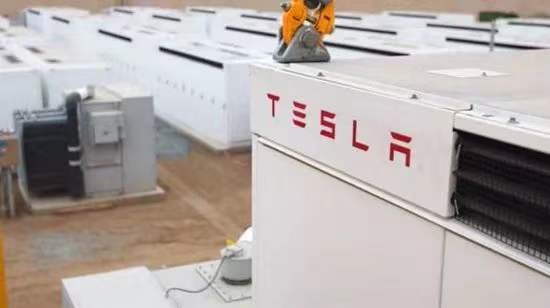The world’s largest “battery energy storage station” is launched in Australia: the energy storage system uses Tesla batteries
On Wednesday, local time, in Victoria, Australia, one of the world’s largest battery-based energy storage systems was officially launched. This energy storage system uses the Megapack energy storage battery series produced by American electric vehicle manufacturer Tesla.

Huge Energy Storage Lithium Battery Pack Station
Battery large-scale energy storage
In the future, large-scale energy storage systems based on lithium batteries can prevent grid power outages, allowing power companies to store and use renewable energy from intermittent sources, such as solar and wind energy.
Recently, 171 related companies have set up 1,048 new energy vehicle power battery recycling service outlets in 31 provinces and municipalities across the country, and cultivated 26 tiers and recycling. For backbone enterprises, the recycling system has been initially established.
Next step
The next step will be to explore and promote new business models such as “Internet + recycling”, encourage upstream and downstream enterprises in the industrial chain to jointly build common recycling channels, and build a batch of centralized recycling service outlets.
According to reports, the developers of the above-mentioned Victorian energy storage facilities are mainly Neoen, a renewable energy giant in Paris, France. Its partners include Tesla’s energy business and AusNet. UGL, a Cimic Group’s subsidiary, participated in part of the project. Construction work.
According to the project’s official website, the electricity stored in this energy storage facility can be used by one million households in Australia for half an hour.
On Wednesday, Australian Minister of Energy, Environment and Climate Change Lily D’Ambrosio posted on Twitter that the battery energy storage system in Victoria is the largest lithium battery system in the southern hemisphere and can be guaranteed to survive the heat.
The supply of electricity under the weather has pushed down the price of electricity and further promoted Australia’s huge renewable energy plan. “Victoria, you should be proud of this.”
The minister also stated that according to the Australian newspaper The Chronicle, 80% of the electricity in the above-mentioned energy storage system is mainly used when the Victorian power grid is under high load pressure.
When such a situation occurs, this system can allow approximately 650,000 households to continue using it for an hour.
Although this is not a very long power supply time, the short-term backup power supply service at that time will bring great convenience to a large number of people.
Perspective
Traditionally, if there is a problem with power generation facilities, grid companies often use emergency generators to generate electricity and supply them to the power plant. First, their power generation business will be restored to normal, and then the power supply to enterprises or households will be restored.
In the future, if power grid companies need to deal with power plant problems, energy storage systems based on large lithium batteries will continue to light up the lights of enterprises or thousands of households.
Of course, these energy storage systems can also be used to help power plants restore power generation in the first place.
Safety
It is worth mentioning that in July this year, the first test of the energy storage system in Victoria started. As a result, two Megapack energy storage batteries supplied by Tesla caught fire.
Fortunately, no casualties were caused. However, the fire triggered an emergency alert for the spread of toxic gas in a nearby community.
Neoen said that after the fire broke out, they and Tesla jointly analyzed the cause of the fire, and then Tesla took some measures to reduce the risk of fire.
Among them, Tesla has made some modifications to the firmware (software) of the Megapack energy storage battery and the on-site monitoring system.
Tesla’s energy business
In addition to the core electric vehicle business, Tesla also has an energy business. However, in recent years, the energy business has not become a profit engine for Tesla.
In the recent third quarter earnings analyst conference call, the company’s executives said that the market has seen an increase in demand for Tesla’s various energy storage products, including Powerwall for ordinary households and Power pack for commercial facilities. And Megapack developed for power companies.
- In the third quarter of this year, Tesla’s energy business unit achieved $806 million in revenue. In addition to energy storage products, the division also integrates the rooftop solar power product business acquired by Tesla in the past.
- In the third quarter, the revenue cost of Tesla’s energy business climbed to $803 million, which means that this business only made a very small profit. In contrast, Tesla’s electric vehicle business achieved revenues of US$12 billion in the third quarter, and the cost of revenue for this business was only US$8.4 billion.
- In the third quarter regulatory report, Tesla also mentioned the energy business. The company said that Tesla continues to expand the production of energy storage products to meet market demand, including the construction of an energy storage product manufacturing plant in Lathrop, California.
Tesla also pointed out that the production of energy storage products is also affected by a global shortage of parts and components.
For the Megapack product line for power companies, the deployment scale of energy storage systems varies greatly from quarter to quarter. This depends on the construction schedule of the customer’s different energy storage projects.
With the official launch of the energy storage system called “Victoria Battery”, this project will also increase part of the revenue of Tesla’s energy business in the future.
 +8613906047998
+8613906047998


